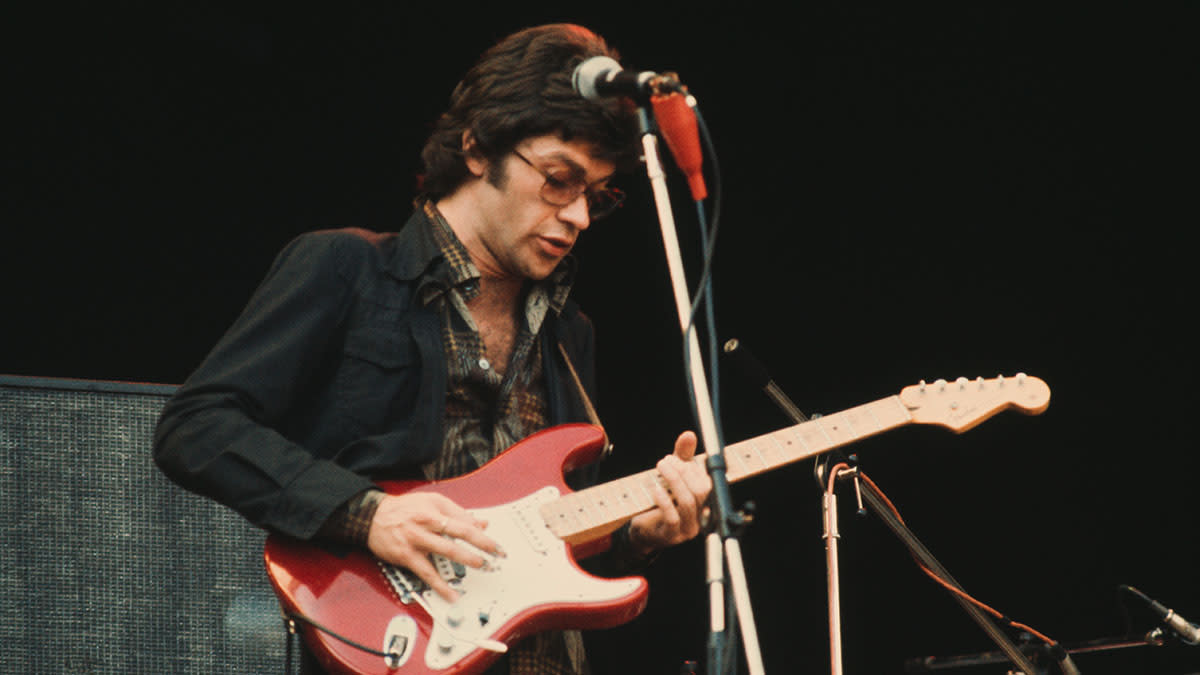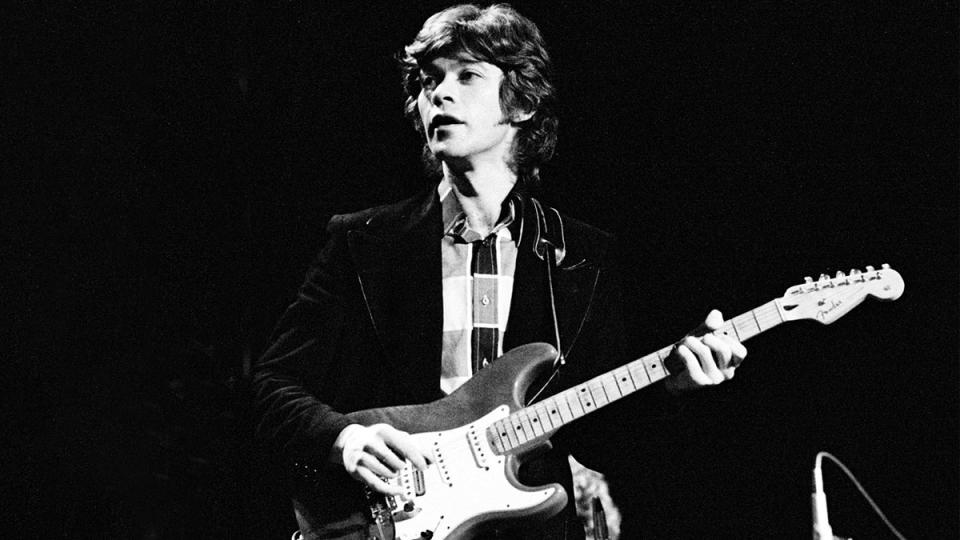“Robbie’s music seemed to come from the deepest place at the heart of this continent, its traditions and tragedies and joys”: Remembering Robbie Robertson, 1943-2023

Jaime Royal ‘Robbie’ Robertson was born and raised in Toronto, Canada. He started learning the guitar at the age of nine, and, as a young teen, cut his teeth in popular music bands in the mid- to late-’50s. By the time he was 16, he had received his first break when Ronnie Hawkins spotted the young musician in Toronto playing with The Suedes, and joined them on stage.
Hawkins then invited Robbie to play bass for his backing band The Hawks, joining drummer and singer Levon Helm and later recruiting bassist Rick Danko (Robbie switching to guitar), pianist Richard Manuel and keyboardist Garth Hudson in the early ’60s. The line-up would go on to become The Band.
By 1964, tired of playing rockabilly, the group parted from Hawkins. For years, they had toured, living in hotels and camping out in disused cars. “We’ve played such far out places that I couldn’t even begin to tell you about them,” Robbie told Rolling Stone back in 1968.
“We played places where the people didn’t come to hear you, they’d come to mess with you. They’d flick cigarette butts at you and throw money at you and steal your things, and, if you got past that, then they’d listen to you.”
A backbone was needed to press on through this adversity, a solidity that could be heard in The Band’s music and Robbie’s playing – something that shunned the flamboyance and virtuosity of the time for a more economical style that carried the song. This method impressed many, not least Eric Clapton, who apparently disbanded Cream after listening to The Band’s remarkable debut album, 1968’s Music From Big Pink.
During this time, the group also drew the attention of Bob Dylan, who considered Robbie a “mathematical guitar genius”, and wanted the musicians to accompany him for his controversial and infamous electric band tours.
“We got booed all over North America, Australia, Europe, and people were saying this isn’t working,” Robbie told Mojo. “But we kept on and Bob didn’t budge. We got to a place where we would listen to these tapes and say, ‘They’re wrong and we’re right.’”
This confidence is clear on Music From Big Pink, which was made in the basement of ‘Big Pink’, a house in West Saugerties, New York that the band shared with Bob Dylan, and also featured in the sessions that would eventually become Dylan’s The Basement Tapes.
The Band’s second album, also known as ‘The Brown Album’, is widely considered to be their masterpiece, with songs like Up On Cripple Creek and King Harvest (Has Surely Come) among many classics
Music From Big Pink thrilled from the off, with some suggesting it was the beginning of Americana: a rich fusion of country music along with the blues, gospel and rockabilly, all tied together by the voices of Robbie, Levon Helm, Rick Danko and Richard Manuel.
The Band’s second album, also known as ‘The Brown Album’, is widely considered to be their masterpiece, with songs like Up On Cripple Creek and King Harvest (Has Surely Come) among many classics.
As with the majority of The Band’s 10 albums, Robbie was named as principal songwriter, a credit that caused friction in later years, particularly from Levon who considered the process of songwriting to be organic. “Sometimes we would grow the songs from scratch,” he told Performing Songwriter. “Sometimes we would just pull them out of thin air.”
Favourite guitars
For the tours with Bob Dylan, Robbie sought an electric guitar they could both use, eventually landing on a stock 1965 Fender Telecaster, serial number L97811, with a standard alder body and maple neck. At the time, Robbie preferred the Telecaster’s 7lb weight for long shows and its workhorse stature and reliability, finding some of the Stratocasters he started out playing too fickle, heavy and prone to performance issues.
Bob and Robbie’s Telecaster saw at least two Dylan tours, plus the recording of the Blonde On Blonde album and The Band’s Stage Fright, as well as numerous other shows. In later days, the guitar had lost its original black finish to natural wood, and its single-coil neck pickup to a Gibson PAF humbucker. Towards the end of its career, the Tele would also have a Bigsby fitted to further enhance its sound.
However, Robbie’s favourite guitar was a Fender Stratocaster, a 1954 model, serial number 0234, originally finished in red’ – it was something of a catalyst in shifting his focus away from the favoured Telecaster. “I had played Telecaster for years, starting back with Ronnie Hawkins,” he told Guitarist in 2017. “We had to play long hours and it was one of their lighter guitars. It didn’t hurt your shoulder at the end of the night.”
When deciding on his new instrument, Robbie lined up the red Strat next to a Tele and found himself rather surprised.
“I had played the Stratocaster years earlier, but because of the tremolo bar on it and the way the whole thing works, if you break a string it goes wildly out of tune,” he said. “But when they gave me this [Strat] to try, it felt amazing. There was something about the neck on it, the balance. And when I plugged it in, the sound. It just completely swayed me in that direction.”

Robbie bought the guitar in 1973 and, although the red finish was unusual enough for the year, it became iconic in November 1976, when he unveiled the newly bronze-dipped Strat for the now-legendary Last Waltz show, a farewell concert appearance for The Band.
In 2016, 40 years after the show, Robbie’s Strat was monumentalised by the Fender Custom Shop who created a meticulous copy of the bronzed guitar called the ‘Last Waltz Stratocaster’.
Fender’s master builder Todd Krause wanted the guitar to replicate the original down to the finest detail, with the same tension knobs, an intricate ‘wear beneath the wear’ finish on the neck, exact replica dents and dings, and Robbie’s preferred relocation of the Strat’s middle pickup adjacent to the bridge pickup.
The Last Waltz concert took place at San Francisco’s Winterland Ballroom, and featured a wealth of special guest performers, including Bob Dylan, Eric Clapton, Dr John and Joni Mitchell, among others. In 1978, Martin Scorsese (at the request of Mean Streets fan Robbie) directed The Last Waltz, a concert film and documentary juxtaposing footage from the show with interviews from The Band members, discussing the group’s history.
The Last Waltz signified the beginning of the end for The Band, with the group drifting apart after the release of their 1977 album, Islands. In 1983, however, The Band reformed to tour without Robbie. Meanwhile, the musician went on to enjoy success as a music producer and solo artist, and his first album, Robbie Robertson, was released in 1987.
Although Robbie always played down suggestions of rivalry and discontent within The Band, the gripes that formed through his early writing credits seemed to remain, especially with Levon, who highlights his disgruntlement in his 1993 memoir, This Wheel’s On Fire – although this features claims that Robbie dismissed. “Levon made statements years after The Band that were just blatantly unfounded,” he told Mojo in 2017. “He’d never said one word to me about that in all our times together.”
Although Robbie claimed The Band were like brothers (“There are five of us but we think like one,” Richard Manuel once told Rolling Stone) and he and Levon the closest, his time with them was done and he was moving on.
Film music
Following Scorsese’s The Last Waltz documentary in 1978, Robbie’s relationship with the director bloomed and they became firm friends and successful collaborators. “Long before we ever met, his music played a central role in my life,” Scorsese stated in a recent tribute to Robbie. “The Band’s music, and Robbie’s own later solo music, seemed to come from the deepest place at the heart of this continent, its traditions and tragedies and joys.”
Together the pair worked to create more than 10 scores, including Raging Bull and Casino and Robbie’s impressive body of work continued to the last, with the soundtrack to Scorsese’s acclaimed new epic Killers Of The Flower Moon, released in October. Robbie’s last solo album, 2019’s accomplished and reflective Sinematic, dropped in the same year as his soundtrack to Scorsese’s The Irishman.
